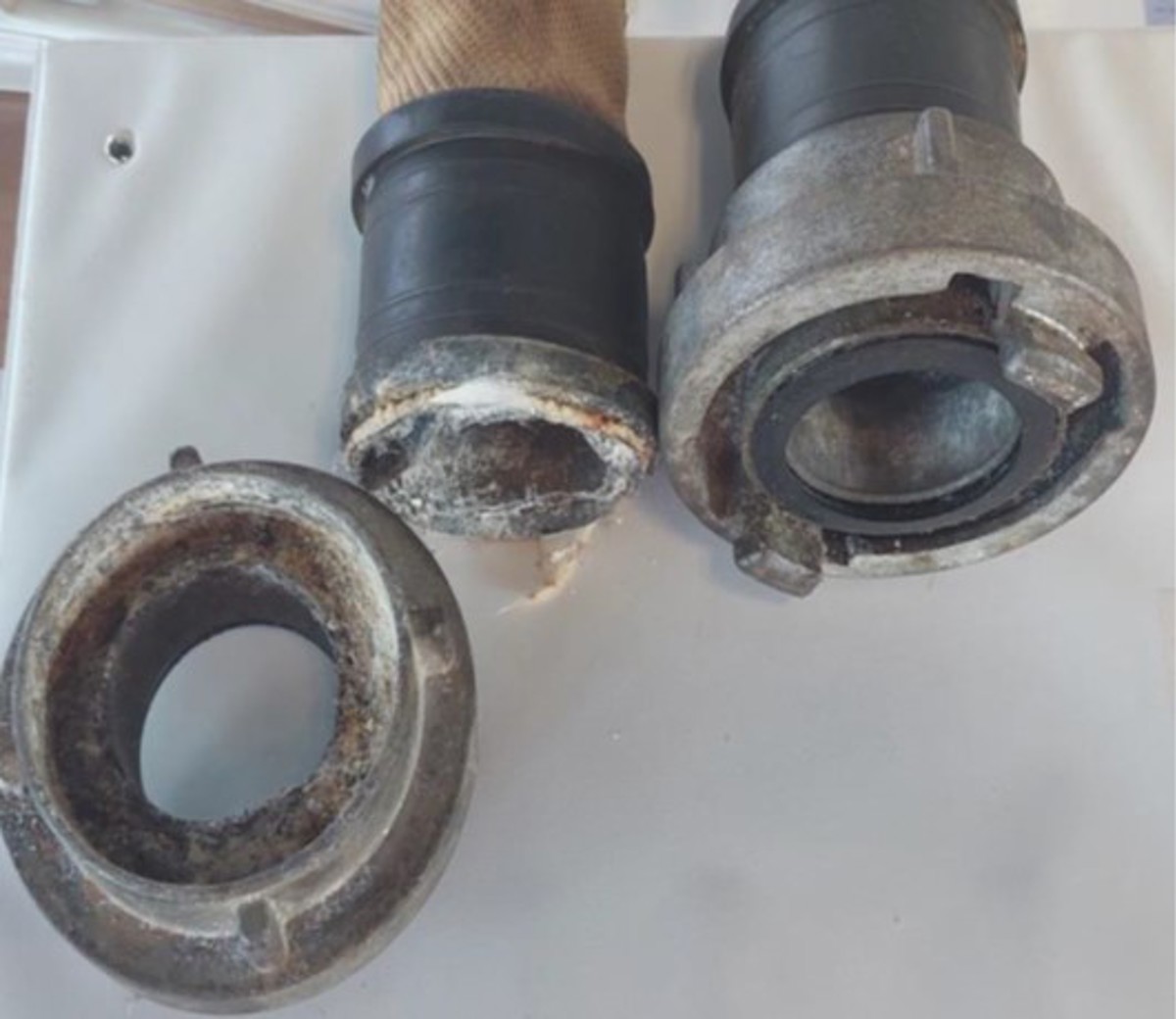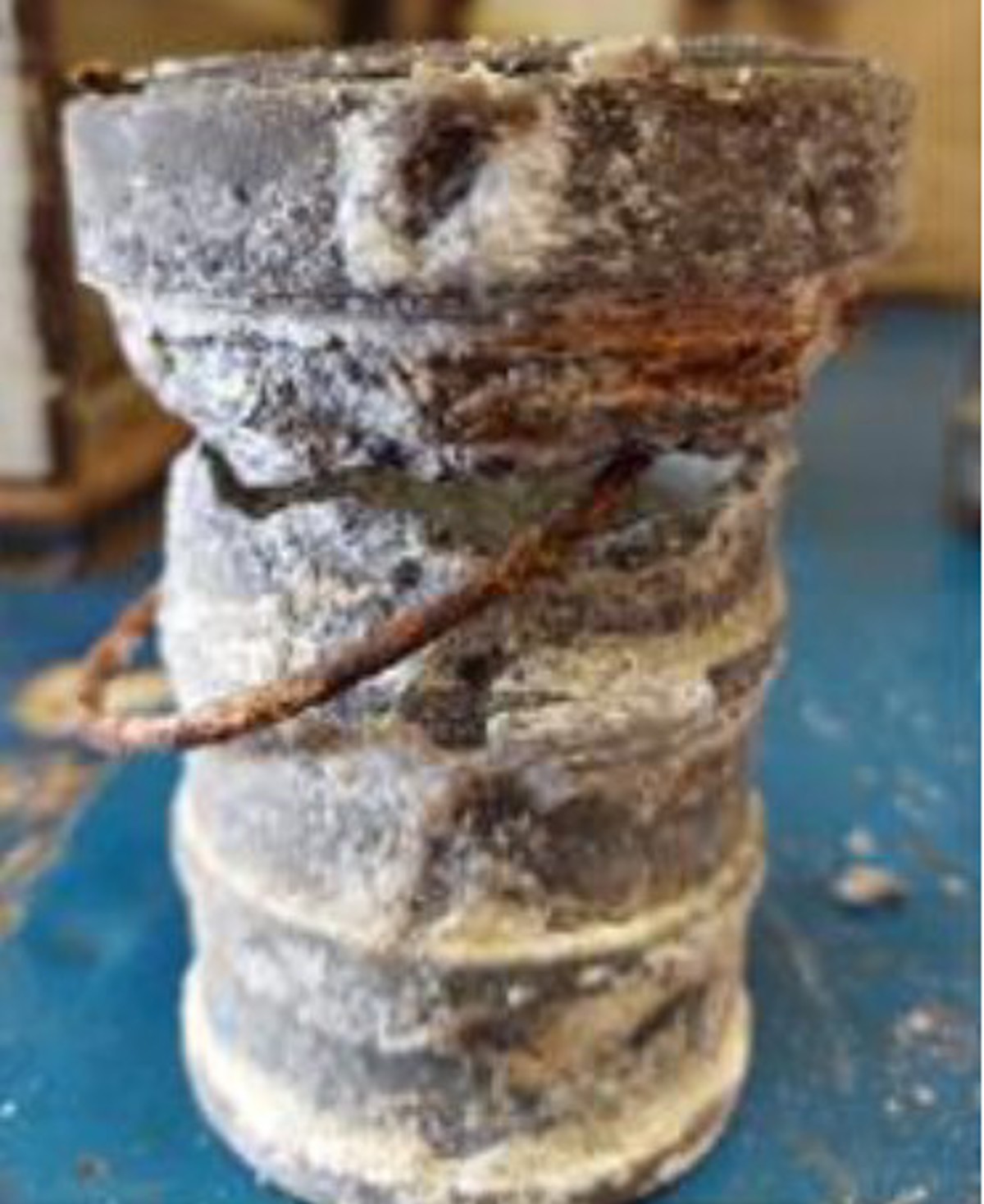Electrolytic corrosion: Failure of fire hose couplings
- Safety Flash
- Published on 9 February 2023
- Generated on 25 April 2025
- 2 minute read
Jump to:
During routine pressure/leak testing, a fire hose fitting failed at the neck of the stub inserted into the hose.
What happened?
As part of annual testing of the fire hydrant hoses, two crew were assigned to conduct leak testing of the main deck fire hoses.
A Number 3 hose (20 m x 52 mm (2”)) was connected to a fire hydrant valve and nozzle and visual inspections of the hose and valve conducted prior to testing.
During the test it was noted that one end of the fire hose had disconnected.
The test was stopped, and further investigation was conducted.

Damage to failed fire hose coupling

Damaged fire hose coupling

Second end of hose, fitting in similar condition

Further view of damage
What went wrong?
Electrolytic corrosion
Initial investigation indicated that this hose appeared to be of a different type from most of the hoses onboard which were made up with an aluminium ‘floating’ flange.
This hose had a Storz ‘C’ coupling, which was thought to have flanges fixed to the hose neck.
Removal of the rubber sleeve covering the seizing wire revealed conventional Monel seizing wire, and indications were present that water had been retained in the fabric outer sleeve under the rubber sleeve.
Inside the coupling, a steel retaining ring was found buried in the powdery aluminium oxides, confirming that the coupling was in fact the same as the others onboard.
But due to corrosion, the floating part was tightly seized on the hose barb shaft.
Investigation of the coupling from the other end of the hose showed no immediate signs of concern. However, there were some small pitting marks evident on the inside of the hose neck and removal of the rubber sleeve showed more indications of corrosion.
Attempts to free off the floating flange caused the fitting to fail.
It was also noted that corrosion was almost as advanced on this coupling as on the fitting which failed.
Actions
- Examine existing fire hose couplings for corrosion, seized floating flanges, and any inability to rotate freely.
- If replacement is required, ensure appropriate fittings are specified – brass may be preferred over aluminium.
- Ensure planned maintenance systems cover appropriate detail for the inspection of fire hose fittings, with specific reference to examination for corrosion.
- Ensure that all personnel involved in the day to day use and maintenance of fire hoses are briefed on the potential issue of electrolytic corrosion.
Related safety flashes
-
IMCA SF 14/21
20 May 2021
-
IMCA SF 04/18
20 February 2018
-
-
IMCA SF 35/16
20 December 2016
IMCA Safety Flashes summarise key safety matters and incidents, allowing lessons to be more easily learnt for the benefit of the entire offshore industry.
The effectiveness of the IMCA Safety Flash system depends on the industry sharing information and so avoiding repeat incidents. Incidents are classified according to IOGP's Life Saving Rules.
All information is anonymised or sanitised, as appropriate, and warnings for graphic content included where possible.
IMCA makes every effort to ensure both the accuracy and reliability of the information shared, but is not be liable for any guidance and/or recommendation and/or statement herein contained.
The information contained in this document does not fulfil or replace any individual's or Member's legal, regulatory or other duties or obligations in respect of their operations. Individuals and Members remain solely responsible for the safe, lawful and proper conduct of their operations.
Share your safety incidents with IMCA online. Sign-up to receive Safety Flashes straight to your email.